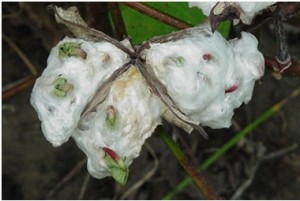Seed Sprouting Observed (Collins, Edmisten, & Stewart)
go.ncsu.edu/readext?378801
en Español / em Português
El inglés es el idioma de control de esta página. En la medida en que haya algún conflicto entre la traducción al inglés y la traducción, el inglés prevalece.
Al hacer clic en el enlace de traducción se activa un servicio de traducción gratuito para convertir la página al español. Al igual que con cualquier traducción por Internet, la conversión no es sensible al contexto y puede que no traduzca el texto en su significado original. NC State Extension no garantiza la exactitud del texto traducido. Por favor, tenga en cuenta que algunas aplicaciones y/o servicios pueden no funcionar como se espera cuando se traducen.
Português
Inglês é o idioma de controle desta página. Na medida que haja algum conflito entre o texto original em Inglês e a tradução, o Inglês prevalece.
Ao clicar no link de tradução, um serviço gratuito de tradução será ativado para converter a página para o Português. Como em qualquer tradução pela internet, a conversão não é sensivel ao contexto e pode não ocorrer a tradução para o significado orginal. O serviço de Extensão da Carolina do Norte (NC State Extension) não garante a exatidão do texto traduzido. Por favor, observe que algumas funções ou serviços podem não funcionar como esperado após a tradução.
English
English is the controlling language of this page. To the extent there is any conflict between the English text and the translation, English controls.
Clicking on the translation link activates a free translation service to convert the page to Spanish. As with any Internet translation, the conversion is not context-sensitive and may not translate the text to its original meaning. NC State Extension does not guarantee the accuracy of the translated text. Please note that some applications and/or services may not function as expected when translated.
Collapse ▲The prolonged rainy spell that has plagued most of NC for over a week has started to cause seed sprouting in several growers’ fields (see photo below). This is something that unfortunately is not surprising, given the unrelenting prolonged and excessively wet conditions that have occurred for approximately 10 days now. The warmer temperatures earlier this week likely contributed to this as well (in addition to the continuously wet conditions), and we are hoping that the development of this will slow down with cooler weather, however once it starts, it may not subside until sunny dry weather arrives. Seed sprouting can occur in any opened bolls under these conditions, but may be a little more severe in fields that have been defoliated where most or all bolls are opened, versus fields that have yet to be defoliated which likely have a few unopened bolls.
So what does this mean for growers?? The more seed that sprout in a given field….the worse the effects will be. Hopefully this will only occur in a small proportion of the crop in affected fields, but the percentage of the crop that will be affected is difficult to know at this point.
Seed sprouting can result in higher trash content, seed coat fragments, and lint discoloration due to staining. Additionally, if fields are harvested before sprouted seed dry down, this could lead to undesirable moisture in lint as well as additional discoloration. If an exceptionally high proportion of bolls are affected, ginning will be a challenge because of the difficulty in getting a seed roll at the gin stand. Lastly, this could result in significantly less seed and decreased seed quality once ginned.
So what can we do about it?? Unfortunately, not much. Wet conditions and heavy rains will likely continue through Monday, but we hope that dry weather will prevail beyond that. The only thing that could cease this phenomenon is warm, sunny, dry weather. In order to minimize problems, growers should watch fields closely and document the proportion of the crop that is affected. It is absolutely critical to wait until these germinated seed completely dry out before harvesting these fields. If you experience difficulty harvesting fields that are affected, it will be important to call your crop insurance agent and document this on the front end (before harvest is complete in these fields).
Additionally, it is reasonable to expect that once these fields are harvested the moisture content of the harvested seedcotton will be higher than normal. It is important to monitor modules for increases in temperature which will lead to further quality concerns and ginning difficulties.
Lastly, if fields have already been defoliated, growers could apply a desiccant (such as paraquat or one of the PPO-inhibitor herbicidal defoliants) shortly before harvest to accelerate the drying process. Results could be inconsistent, but if this is the case, it is important to observe label restrictions regarding pre-harvest intervals. Application of desiccants can only buy you a little time through slightly accelerating the drying process. A desiccant can dry down the sprouted seedlings quicker; however the integrity of the sprouted seed has already been lost which will complicate the ginning process. Limited experience with these situations suggests that a desiccant might allow for a quicker harvest, but does not help in ginning this cotton. If warm, dry conditions prevail, waiting a couple of days more before harvesting could provide the same result or outcome.



